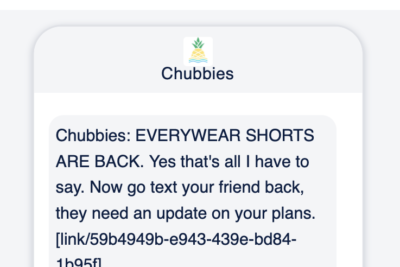Even though transactional emails see 8x more opens and clicks than any other type of email — and can generate 6x more revenue — it’s shocking to see how many companies fall short. In our unboxing blog series we take a look at the transactional emails of the biggest and most popular retailers. Join us to see what’s working, what’s not, and apply these learnings to your own transactional emails.
Does Target Hit the Mark?
You may already know that Target is the second largest big box discount store in the country (following Walmart), but did you know they’ve been around since 1902? That’s right, Target first went into business as Goodfellow Dry Goods at the beginning of the 20th century. Then, in 1962, the first official Target store opened in Roseville, Minn. and in 1999 they launched Target.com.
A Harvard Business Review retailer analysis points out that part of Target’s success can be attributed to the products they sell, the way they market, and who they’re marketing to. Target emphasizes “design-forward apparel and home decor for younger, image-conscious consumers,” effecting “mass prestige” messaging with their advertising.
Target uses language and fun imagery to connect with their millennial audience. For example, they use phrases like “December 1st like” and “Me on December 1st” in their social posts. Target also consistently uses the ubiquitous Target red throughout their marketing, branding and in-store experiences, enabling instant brand recognition.

Seasonality is another big focus for Target. A look at their social posts shows lots of festive in-store shots to promote the notion that shopping at Target is fun. Their email marketing is laden with gift ideas. This makes sense because Black Friday, Cyber Monday and the holiday season are when retail sales peak. A Deloitte survey showed that the average consumer was expected to spend $1,226 in the 2017 holiday season. This means that major retailers need to bring their A game to get a piece of the pie.
The Target Purchase Experience
How do Target’s transactional emails measure up to their promotions? The MailCharts data team tested this by purchasing a gift bag for $0.62 plus shipping.
Today we’ll unbox the product along with the email purchase experience. From the time of purchase through the first 30 days, Target sent us 34 emails, which is one of the most aggressive cadences we’ve seen so far in our series (Zulily being the highest at 37 emails in 30 days.)
To see more of the Target emails sent to a purchaser, as well as the timing and delay between emails, sign up for MailCharts.
Let’s examine Target’s purchase email experience, starting with the Order Confirmation email.
A Helpful Order Confirmation

While the copy in Target’s order confirmation may be a little bland (Thank you for your purchase), the email is chock full of helpful information and links.
For example, Target offers the option to change your order with a link to the order details page. This is extremely helpful, yet somewhat uncommon among most of the retailers we’ve studied. This level of customer self-service is more common with bigger e-commerce players like Amazon.
Another bonus in this email is the inclusion of our shipment arrival date, a key piece of information that smaller retailers often don’t provide.
Target also hits the mark with their “Good to know” section which outlines several FAQs. While there is not a clear callout for support in this email, the FAQs and order details link probably cover many of those bases.
Nine hours later we received our next email.
A Succinct Shipping Notification

Target’s shipping notification email gets right to the point. It provides us with all the information we need without a lot of fanfare.
We also like that the “Even more great ways to save” section is on-brand from a copy and design perspective. The section links to things like coupons and clearance rather than individual products and discounts, which prevents the email from becoming overly promotional or salesy. Nicely done, Target.
Seven days later, we receive our next transactional email.
The Delivery Notification

Not many companies send delivery notification emails. While it comes as a pleasant surprise, it also makes sense from a competition standpoint. Many large retailers are working hard to model their email experiences after Amazon, which is essentially writing today’s e-commerce playbook.
The delivery notification provides peace of mind to customers at what could be considered the weakest link in the online shopping chain: actually receiving the product. Most companies notify you that your order has shipped, and then it’s up to you to make sure you receive it. This can be quite difficult, especially during the holidays when package theft becomes rampant or if you live in a larger building.

Ok, we’ll get off the soapbox now. One area of opportunity for Target is to solicit feedback from customers through reviews or even a Net Promoter Score survey, which we saw Adidas do well.
The Target Unboxing Experience

Target does a good job of branding their shipping packaging, which seems like a no-brainer, but is an opportunity that many e-tailers are missing.

We also like the header copy on the packing slip. “Just for you” makes the unboxing experience feel warm and personal.

Target’s transactional email experience does a great job of getting right to the point. They stay on-brand with savings messaging, yet their emails don’t feel overly promotional.
The bar for online shopping has been set high by Amazon, but it’s clear that Target is taking notes and working hard to provide a quality experience.
To see more emails from this purchase experience and to find detailed email insights from 30,000+ other companies, join MailCharts today!



